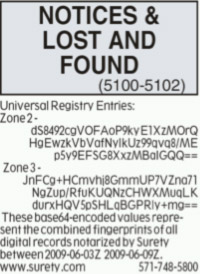World’s Oldest Blockchain is in the New York Times Since 1995 invented by cryptographers Stuart Haber and Scott Stornetta @absoluteproof
Instead of posting customer hashes to a public digital ledger, Surety creates a unique hash value of all the new seals added to the database each week and publishes this hash value in the New York Times. The hash is placed in a small ad in the Times classified section under the heading “Notices & Lost and Found” and has appeared once a week since 1995.
https://motherboard.vice.com/en_us/article/j5nzx4/what-was-the-first-blockchain
http://surety.com/digital-copyright-protection/prove-ownership
https://powerofproof.wordpress.com/
The longest running blockchain started in 1995 and is still running strong today. Current hash circled in red. Based on Stuart Haber and W. Scott Stornetta https://t.co/q1VIUvwGUA pic.twitter.com/eGEhqFSl7U
— Ittai Abraham (@ittaia) August 23, 2018
WIRED Dec 1994 article on DigiCash and David Chaum
WIRED Dec 1994 article on DigiCash and David Chaum…..one of a few projects that Satoshi recognized in the BTC white paper. pic.twitter.com/mHiAQa66z8
— BitBuzz NFT.ETH (@CryptoSteveWand) November 25, 2020
Henry Ford proposes Energy Currency December 4, 1921
In the early 20th century, people were interested in replacing gold or the dollar with "the energy dollar” or “units of energy.” The concept was popular due to its sound money characteristics. The flaw? It could not be transmitted or stored easily. from Bitcoin
New-York Tribune December 4 1921 https://t.co/Am9Whb2mx1 https://t.co/aJiZSITcBr pic.twitter.com/4lj9Eohj29
— Bitcoin Art Gallery (@btcArtGallery) January 7, 2022
https://www.loc.gov/resource/sn83030214/1921-12-04/ed-1/?sp=1&r=0.104,0.174,0.239,0.333,0











